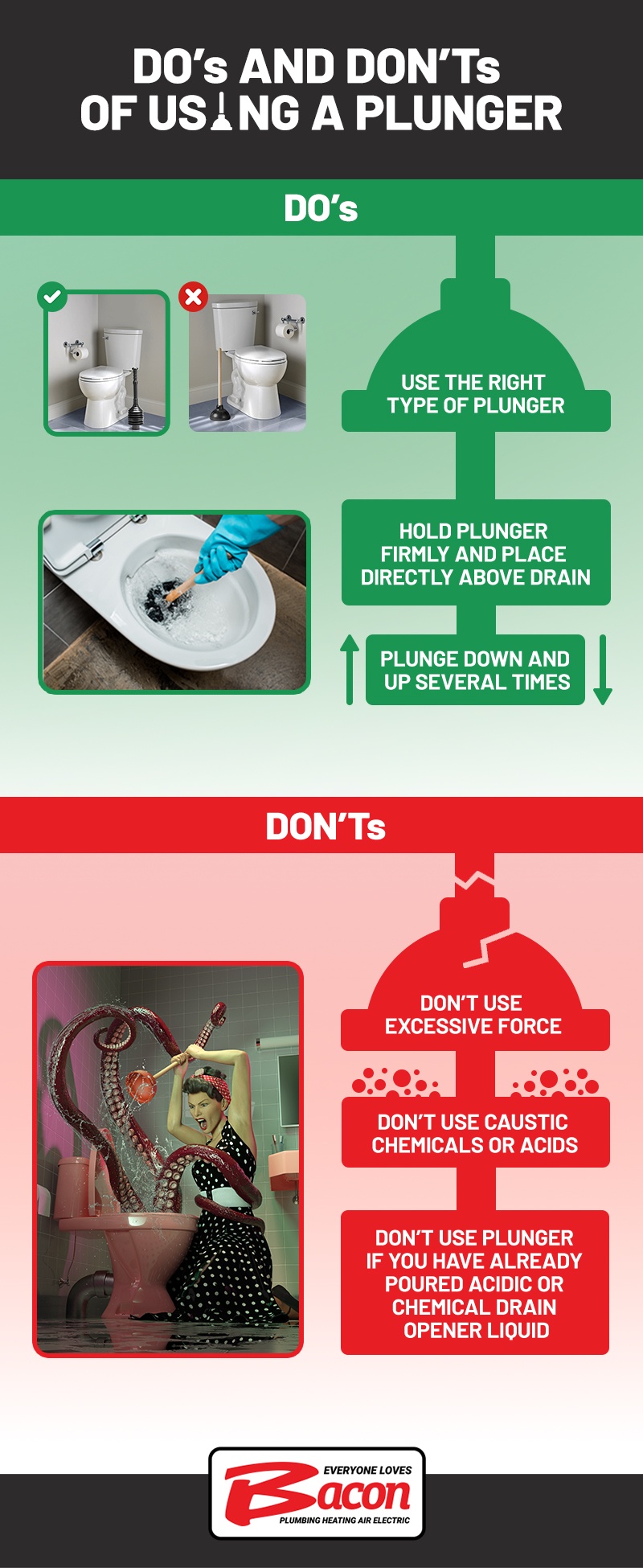 The plunger is a cheap and effective tool found in almost every home. Plungers are relatively self-explanatory to use, but to the inexperienced, they may seem foreign.
The plunger is a cheap and effective tool found in almost every home. Plungers are relatively self-explanatory to use, but to the inexperienced, they may seem foreign.
- Toilet Plunger or Flange Plunger
- Sink Plunger or Cup Plunger
- Accordion Plunger
You can use a plunger to unclog your toilet, kitchen sink, or any drainage system found in the standard home. A toilet gets occasionally blocked when the amount of debris exceeds the water weight used in a typical flush cycle. The most common way to unclog a blocked toilet is to use a toilet plunger. A toilet plunger works by forcing the water against the blockage using pressure created by suction to push the blocking debris, freeing water flow.
Plungers are often the only thing you might need to unblock your clogged toilet or sink to get them working again. However, all plungers are not the same; a plunger must form a tight seal to work effectively and get the best results. That’s where the most mistakes are made: using the incorrect plunger for the issue at hand.
Then there are some plungers that are only used by professional plumbers, such as Taze Plungers, which consist of a straight metal rod and a small disc. The disc is sized so that it fits inside the pipe touching the pipe’s walls, not on the outside of the drain.
Now, let’s talk about the do’s and don’ts of using a plunger
- As we stated before, find the right type of plunger to unclog your clogged drain.
- Hold the plunger firmly using both of your hands, then place it directly above the drain and plunge down and up several times. On your last plunge, use a little extra strength to jerk the plunger upward and out.
- Do block the overflow drain with wet dishcloths.
- Before using the plunger, try doing some of these, then using your plunger to clear any access.
- Try to flush the clog by adding a tablespoon of dishwashing liquid to the clogged area, or you can also add that dishwashing liquid to a large pot of boiling water. There’s a high chance that some grease-type substance is the reason your drain is clogged, and it may be flushed by pouring the soapy, boiling water down that drain.
- Examine the strainer or stopper to see if hair and soap scum are trapped, creating a blockage. To remove the stopper, twist it counterclockwise, clean it and insert a wire into the drain. Now, turn the wire and then pull the blockage up and out.
- Try a biodegradable drain cleaner.
- If the plunging doesn’t work, use the plumber’s snake. You have found your clog when you feel the resistance. Keep cranking and rotate the auger.
- Don’t use excessive force when plunging a clog. Also, keep in mind that you shouldn’t use too much pressure because it can damage the drain line connection, which will lead to further problems eventually.
- Don’t use caustic chemicals or Acids to unclog your drain. Acid and these commercial chemicals can very well damage your pipes and harm your home.
- Don’t use the plunger if you have already poured the acidic or chemical drain opener liquid. When you’re pushing and pulling with the plunger, there’s a risk of contaminated acidic liquid splashing on and burning your skin.
If you have a drain that a plunger isn’t fixing or any other kind of plumbing issue you find yourself in, the Bacon Plumbing Heating Air Electric team will arrive quickly to take care of your problem promptly.



